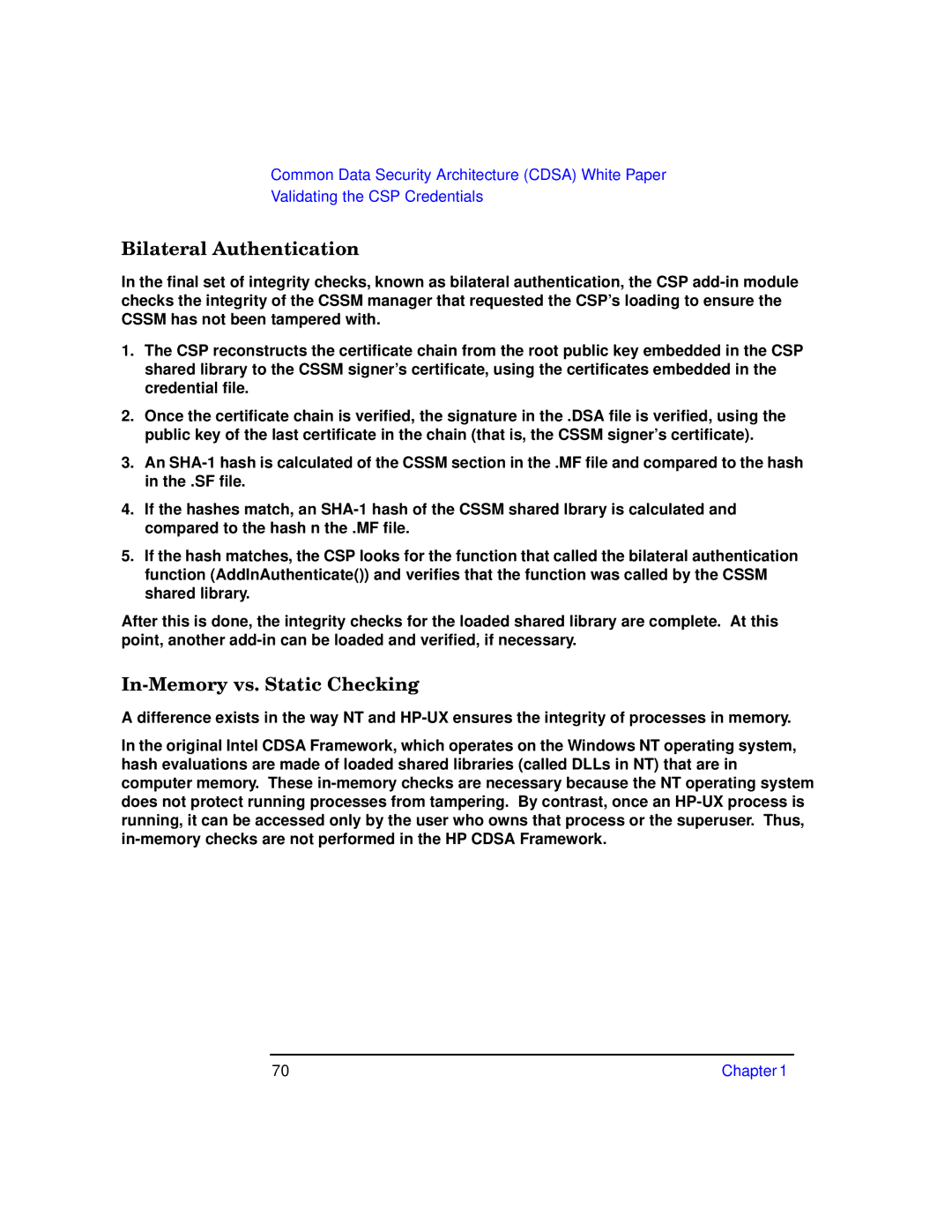Common Data Security Architecture (CDSA) White Paper
Validating the CSP Credentials
Bilateral Authentication
In the final set of integrity checks, known as bilateral authentication, the CSP
1.The CSP reconstructs the certificate chain from the root public key embedded in the CSP shared library to the CSSM signer’s certificate, using the certificates embedded in the credential file.
2.Once the certificate chain is verified, the signature in the .DSA file is verified, using the public key of the last certificate in the chain (that is, the CSSM signer’s certificate).
3.An
4.If the hashes match, an
5.If the hash matches, the CSP looks for the function that called the bilateral authentication function (AddInAuthenticate()) and verifies that the function was called by the CSSM shared library.
After this is done, the integrity checks for the loaded shared library are complete. At this point, another
In-Memory vs. Static Checking
A difference exists in the way NT and
In the original Intel CDSA Framework, which operates on the Windows NT operating system, hash evaluations are made of loaded shared libraries (called DLLs in NT) that are in computer memory. These
70 | Chapter 1 |
